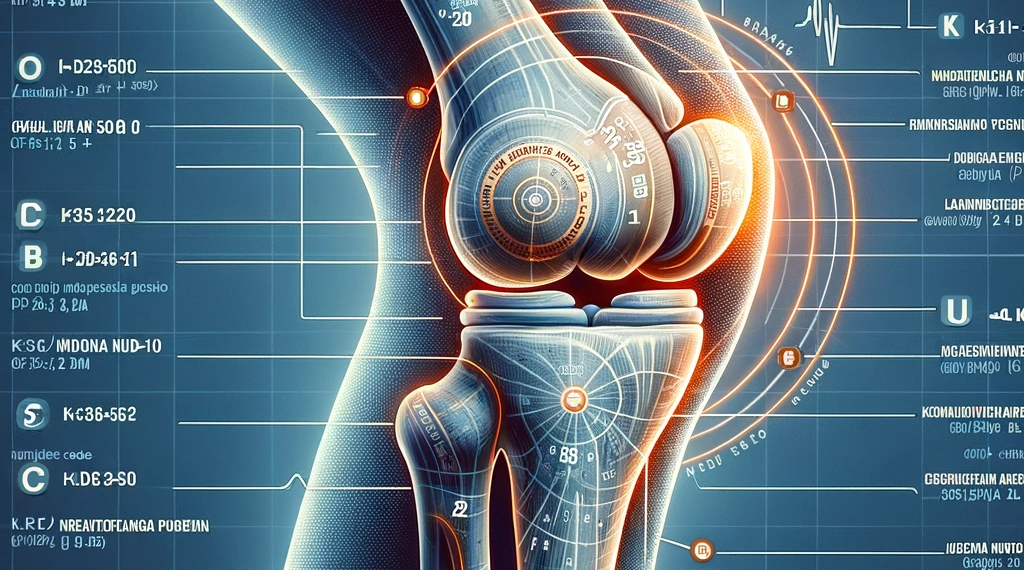As medical billing and coding professionals, it is crucial to have a comprehensive understanding of the different ICD-10 codes associated with left knee and right knee issues. These codes play a vital role in accurately documenting and billing for the diagnoses and treatments related to knee problems. In this article, we will explore the most frequently used ICD-10 codes for left knee and right knee issues, providing you with the knowledge and guidance necessary for successful medical billing and coding in this specialized area.
Common ICD-10 Codes for Left Knee and Right Knee Issues in Medical Billing and Coding
ICD-10 Codes for Left Knee Issues
When it comes to medical billing and coding for left knee issues, there are specific ICD-10 codes that are commonly used. These codes help healthcare professionals accurately document and report the left knee conditions for insurance and reimbursement purposes. Here are some commonly used ICD-10 codes for left knee issues:
- M22.42 – Patellofemoral disorders, left knee
- This code is used for conditions that affect the patellofemoral joint, such as patellar subluxation or dislocation.
- M23.41 – Meniscus derangement, left knee
- This code is used for various meniscus injuries or abnormalities in the left knee, including tears or degeneration.
- M17.12 – Unilateral primary osteoarthritis, left knee
- This code is used for cases where primary osteoarthritis primarily affects the left knee joint.
- S83.41XA – Sprain of anterior cruciate ligament of left knee, initial encounter
- This code is used for sprains or injuries to the anterior cruciate ligament (ACL) in the left knee.
ICD-10 Codes for Right Knee Issues
Similar to left knee issues, right knee problems also have specific ICD-10 codes that are used in medical billing and coding. These codes enable accurate documentation and reporting of right knee conditions for insurance and reimbursement purposes. Here are some commonly used ICD-10 codes for right knee issues:
- M22.41 – Patellofemoral disorders, right knee
- This code is used for conditions that affect the patellofemoral joint, such as patellar subluxation or dislocation in the right knee.
- M23.42 – Meniscus derangement, right knee
- This code is used for various meniscus injuries or abnormalities in the right knee, including tears or degeneration.
- M17.11 – Unilateral primary osteoarthritis, right knee
- This code is used for cases where primary osteoarthritis primarily affects the right knee joint.
- S83.42XA – Sprain of anterior cruciate ligament of right knee, initial encounter
- This code is used for sprains or injuries to the anterior cruciate ligament (ACL) in the right knee.
ICD-10 Codes for Common Knee Issues
Apart from specific left or right knee issues, there are also common knee issues that healthcare professionals encounter in medical billing and coding. These issues may affect both knees or have a bilateral impact. Here are some commonly used ICD-10 codes for common knee issues:
- M22.4 – Patellofemoral disorders
- This code is used for general patellofemoral joint disorders, regardless of whether it affects the left, right, or both knees.
- M23.4 – Meniscus derangement
- This code is used for general meniscus injuries or abnormalities, regardless of whether it affects the left, right, or both knees.
- M17.1 – Unilateral primary osteoarthritis
- This code is used for cases where primary osteoarthritis affects either the left or right knee joint, without specifying a particular side.
- S83.4 – Sprain of anterior cruciate ligament
- This code is used for general sprains or injuries to the anterior cruciate ligament (ACL), regardless of whether it affects the left, right, or both knees.
By utilizing these ICD-10 codes accurately, healthcare professionals can ensure proper documentation and coding of left knee, right knee, and common knee issues in the medical billing and coding process.
In conclusion, understanding and utilizing the common ICD-10 codes for left knee and right knee issues is crucial in the field of medical billing and coding. These codes provide a standardized way to document and communicate specific diagnoses related to knee problems, enabling accurate and efficient billing processes. By familiarizing themselves with these codes, healthcare professionals can ensure proper reimbursement and streamline administrative tasks. Furthermore, staying updated with any changes or updates to the ICD-10 coding system is essential to maintain compliance and facilitate effective healthcare management. Ultimately, the use of correct ICD-10 codes for left knee and right knee issues plays a pivotal role in enhancing patient care and ensuring smooth operations within medical billing and coding practices.

